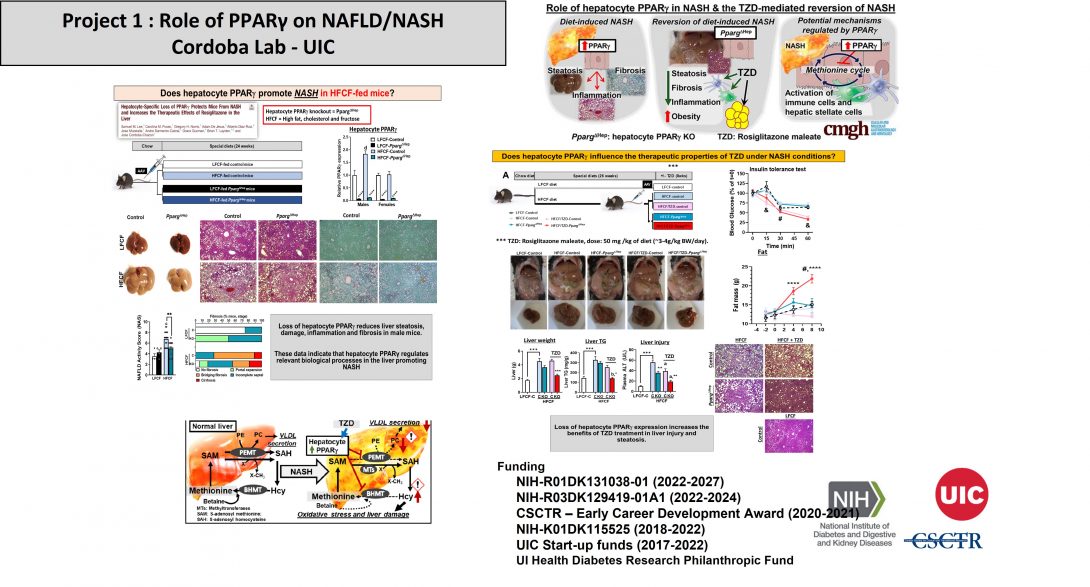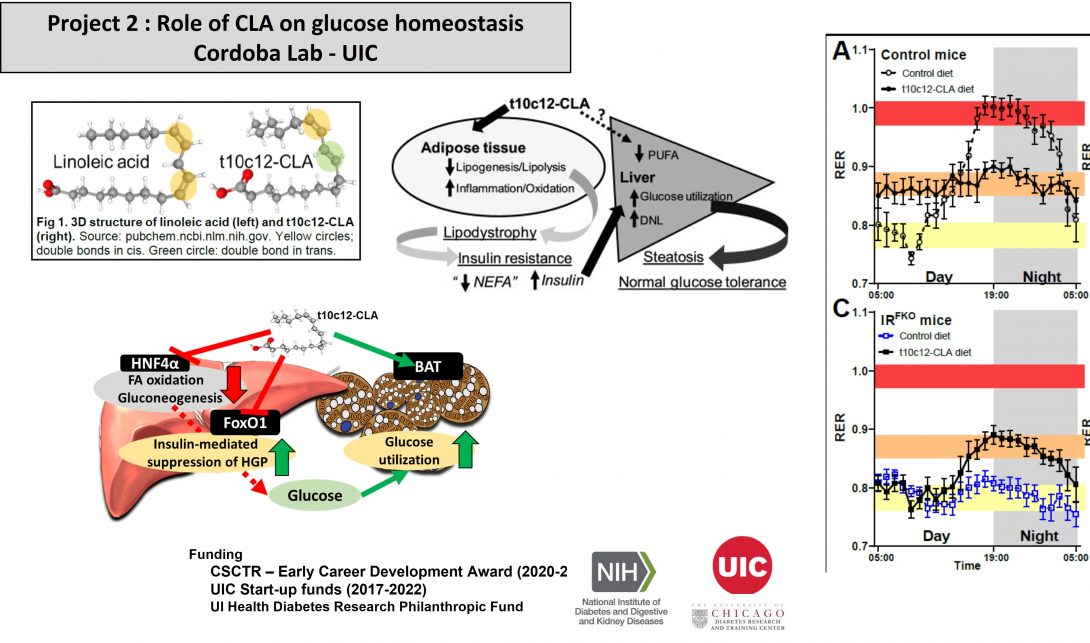Research Project
Cordoba Lab has two major lines of investigation that study the "Role of hepatocyte PPARgamma on NAFLD/NASH" and "Role of t10c12-CLA on glucose homeostasis" of as described below.
In addition, we are developing additional research lines that are focused on the development of liver cancer as consequence of the onset of NASH, and how natural prenylated compounds alter the function of PPARgamma to reduce the development of NASH in mouse models.
Main projects Heading link

Role of hepatocyte PPARgamma on NAFLD/NASH. We are investigating how the nuclear receptor PPARgamma regulates the metabolism of hepatocytes and contributes to the development of NAFLD and NASH in mouse models.
This line of investigation has been funded with different NIH grants (K01, R03 and R01), and our current research efforts are focused on understand how PPARgamma expression is negatively associated with the regulation of methionine metabolism in the liver. A dysregulation of methionine metabolism, and the increase of homocysteine levels in the liver promotes the progression of inflammation and fibrosis. Our genetic approaches in mouse models are designed to investigate if the restoration of specific enzymatic activities can overcome the negative effect of PPARgamma in the physiology of the liver.
second project Heading link

Role of t10c12-CLA on glucose homeostasis. Our research group investigates how the lipodystrophy phenotype induced by the isomer of the conjugated linoleic acid (t10c12-CLA) does not increase the levels of blood glucose. This paradoxical observation in a insulin resistant mouse model with liver steatosis and severe insulin resistance indicates that are unknown effect of this dietary isomer of conjugated linoleic acid that could modulate liver metabolism and might be used to regulate glucose levels in insulin resistance states.